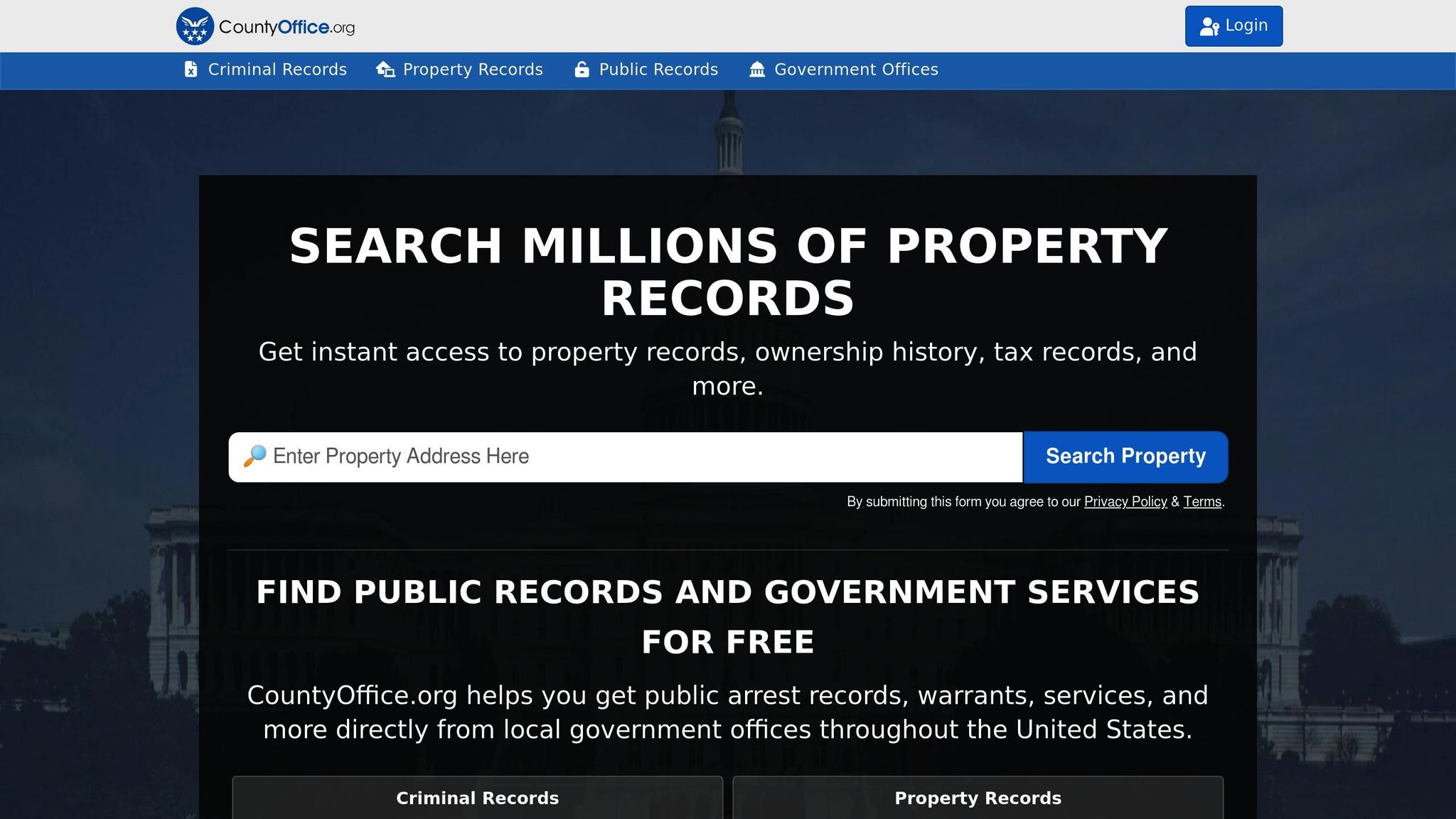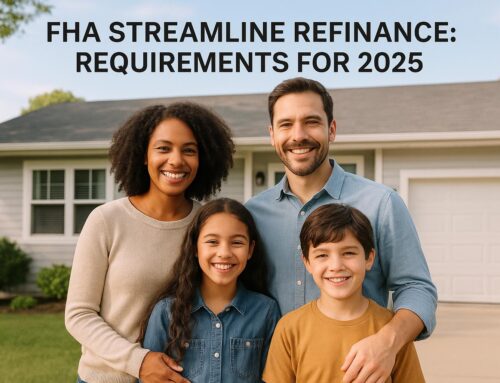Buying a vacation home? Be prepared for higher mortgage rates compared to primary residences – typically 0.50% more. Why? Lenders see vacation homes as riskier investments. Here’s what affects your loan rate:
- Credit Score: A minimum of 640 is required, but higher scores (760+) secure the best rates.
- Down Payment: At least 10% is standard, but lower credit scores may require 20% or more.
- Loan Type: Fixed-rate mortgages offer stability, while adjustable-rate mortgages (ARMs) start with lower rates but can rise later.
- Property Details: Location, type, and market desirability impact rates. High-demand areas like beach towns often have higher costs.
- Financial Profile: Debt-to-income ratio (under 45%), cash reserves, and strong documentation are crucial for approval.
Quick Comparison
| Factor | Primary Residence | Vacation Home | Investment Property |
|---|---|---|---|
| Interest Rate | Market Rate | +0.50% above market | +0.50–0.75% above market |
| Minimum Down Payment | Starting at 0% | 10% | 15–25% |
| Minimum Credit Score | 500–620 | 640 | 640 |
Pro Tip: Boost your credit score, save for a larger down payment, and choose properties in stable markets to secure better terms.
Are Mortgage Rates Different For A Second Home? – CountyOffice.org
1. Credit Score Impact
When it comes to vacation home loans, your credit score plays a major role in determining the interest rate you’ll be offered. As of May 2025, most lenders expect a minimum credit score of 640 for vacation home mortgages. That’s slightly higher than the 620 typically required for primary home loans [3].
Here’s how interest rates vary based on FICO® score ranges, according to early 2025 data:
| FICO® Score Range | Interest Rate (APR) |
|---|---|
| 760–850 | Best rates (7.242% APR) |
| 700–759 | +0.207% (7.449% APR) |
| 680–699 | +0.313% (7.555% APR) |
| 660–679 | +0.367% (7.609% APR) |
| 640–659 | +0.469% (7.711% APR) |
| 620–639 | +0.596% (7.838% APR) |
If your credit score falls below 680, you’ll need to make a down payment of at least 25%. For borrowers with a high debt-to-income ratio, lenders may require a score of 720 or higher [3].
To improve your chances of landing the best rates, consider these strategies:
- Check your credit report regularly: Spot errors and dispute inaccuracies [4].
- Keep credit utilization low: Aim to use less than 30% of your available credit [4].
- Pay all bills on time: Late payments can drag your score down.
- Increase your down payment: If your credit score isn’t ideal, a larger down payment can help [3].
Even a modest boost to your credit score can lead to significant savings. For instance, moving from the 620–639 range to the 700–759 range could lower your interest rate by nearly 0.4 percentage points [4]. Over the life of your loan, this could add up to thousands of dollars in savings.
2. Required Down Payment
When it comes to vacation home mortgages, the size of your down payment plays a big role in determining your interest rate. Most lenders set the minimum down payment for vacation homes at 10%, which is higher than what’s typically required for primary residences [3].
However, if your credit score is less than stellar or your debt-to-income ratio is on the high side, lenders might ask for a down payment of 20% or more. While this might seem steep, putting more money down can improve your chances of approval and even help you lock in a better interest rate [3].
Here are some tips to help you secure a favorable rate:
- Save more upfront: A larger down payment can reduce your loan costs and help you qualify for lower interest rates.
- Lower your debt-to-income ratio: Reducing your financial obligations can make lenders more comfortable, potentially lowering the amount they require upfront.
- Strengthen your overall profile: A higher down payment can act as a buffer if your credit score isn’t perfect.
Keep in mind that vacation home loans often come with interest rates 0.25%–0.50% higher than those for primary residences [3]. That said, some credit unions provide special options, such as military financing, which may allow down payments as low as 5% for second homes [5].
Next, let’s explore how different loan types can influence your rate.
3. Available Loan Types
Choosing the right loan type is crucial because it directly affects your interest rates and overall financing costs. Here’s a closer look at some of the most common loan types and how their rate structures work.
Fixed-Rate Mortgages (FRMs)
Fixed-rate mortgages are all about stability. They come with an interest rate that stays the same for the entire loan term. Currently, the average APR for a 30-year FRM is 7.028%, while a 15-year FRM averages 6.103% [7]. The consistency in payments makes it easier to plan your budget without surprises.
Adjustable-Rate Mortgages (ARMs)
ARMs offer lower starting rates, with a 5-year ARM averaging 7.266% APR [7]. However, these rates can change over time, which means your monthly payments might increase. ARMs are a good fit for buyers who don’t plan to hold onto the property long-term, such as those intending to sell before rate adjustments kick in.
Debt Service Coverage Ratio (DSCR) Loans
DSCR loans are designed with rental property investors in mind. Instead of relying on your personal income, these loans look at the property’s ability to generate rental income. This approach often speeds up the approval process [2] and is ideal for those focusing on income-producing properties.
Short-Term Rental (STR) Loans
If you’re eyeing properties for short-term rentals on platforms like Airbnb or VRBO, STR loans are tailored for you. They offer flexible qualification requirements specifically designed for properties rented out nightly or weekly [6].
When deciding on a loan type, think about factors like:
- How long you plan to keep the property
- Your rental income strategy
- Whether you’re comfortable with potential rate changes
- Your broader financial objectives
It’s worth noting that vacation home loans generally come with interest rates 0.25% to 0.50% higher than loans for primary residences [2]. By understanding these loan options, you can better position yourself to secure financing that aligns with your goals.
At HomeLoanAgents, we provide personalized, tech-driven mortgage solutions to help you navigate these choices with confidence. Let us guide you toward the best option for your needs.
sbb-itb-8115fc4
4. Property Details
The features and location of your vacation home play a key role in determining borrowing costs.
Location Impact
Where your property is located significantly influences your mortgage rate. Homes in high-demand destinations – like beachfront areas in Florida or mountain retreats in the Rockies – often come with higher rates. These popular spots not only drive up market value but also increase the cost of borrowing [12].
Property Type and Structure
The type of vacation property you choose matters. Single-family homes generally qualify for lower interest rates compared to condos or townhouses. This is because lenders view single-family homes as easier to sell, making them a safer investment [11].
Market Desirability
Vacation homes in areas with strong rental demand often benefit from better financial metrics. For instance, properties in locations with high rental yields, as shown below, may offer more favorable rate options [13]:
| Location | Average Property Value | Annual Revenue | Gross Yield |
|---|---|---|---|
| Fort Walton Beach | $510,242 | $73,794 | 14.5% |
| Deerfield Beach | $502,092 | $67,736 | 13.5% |
| Davenport | $457,307 | $59,123 | 12.9% |
Even with these appealing numbers, it’s essential to weigh the potential risks.
Risk Factors
Certain location-specific risks can drive up loan rates, such as:
- Properties in areas prone to natural disasters often face higher rates [12].
- Homes in remote or less accessible locations may come with increased costs due to market instability [10].
"When an area is in demand, more people are interested in purchasing homes, and this increases the price of homes. Because the borrowers are willing to pay a premium for prime locations, the lenders feel that they can charge higher interest rates."
- Peter Minkoff [12]
Property Valuation
The appraised value of your vacation home directly impacts your loan terms. As Duncan Hsia, owner of Infinite Financial, explains, "For a second home, unlike a primary residence, buyers will need to qualify for both their primary residence costs and the second home costs" [8].
Vacation homes make up only 5.11% of the U.S. housing market [9], which means lenders carefully assess these properties when determining rates. To secure the best possible terms, consider properties in well-established vacation markets with strong rental histories. For tailored mortgage solutions designed specifically for vacation homes, check out HomeLoanAgents.
Next, we’ll look at how your financial profile can help you secure better rates.
5. Financial Requirements
Securing a vacation home loan comes with stricter financial expectations. Lenders focus on factors like your debt-to-income (DTI) ratio, cash reserves, and detailed documentation. Once credit score and down payment are addressed, having a solid financial foundation becomes essential for locking in competitive loan rates.
Debt-to-Income (DTI) Requirements
Lenders generally cap DTI at 45% for second homes, though some may require it to be below 36% [14]. For example, if your monthly income is $10,000, your total debt payments – including the new mortgage – shouldn’t exceed $4,500 to meet the 45% threshold [3]. Alongside DTI, having adequate cash reserves is just as important.
Cash Reserve Requirements
Cash reserves act as a safety net, ensuring mortgage payments can continue during unexpected income disruptions. Here’s a quick breakdown of typical reserve requirements:
| Borrower Type | Minimum Required Reserves | Notes |
|---|---|---|
| W-2 Employees | 2 months | For borrowers with strong financials |
| Self-Employed | 6+ months | Reflects income variability |
| Jumbo Loans | 12 months | Stricter due to larger loan amounts |
These reserves must cover payments for both your primary home and the vacation property [3].
Compensating Factors
If certain metrics, like DTI or credit score, are less than ideal, other strengths in your financial profile can help. For instance, Fannie Mae allows a 45% DTI with a 660 FICO score if paired with a 25% down payment [3]. Substantial reserves or an excellent credit history can also lead to more flexible loan terms.
Documentation Requirements
Be prepared to provide detailed documentation, including:
- Recent tax returns
- Bank statements
- Proof of income
- Asset statements
- Information about your primary residence [15]
Strategic Financial Planning
To improve your chances of favorable loan terms, focus on these strategies:
- Reduce revolving debt while building up your reserves
- Increase your down payment to strengthen your profile
- Keep detailed and up-to-date records of income and assets [14]
Rate Comparison by Factor
Understanding how various factors influence your vacation home loan rate can offer clarity and help you plan better. Lenders adjust rates based on the type of property and your financial profile, tailoring each offer to the specific situation.
Credit Score Impact
For a deeper dive into how your credit score affects rates, check out the earlier section. Here, it’s worth emphasizing that rates can vary significantly depending on your score, and this applies differently across property types.
Property Type Rate Differences
Let’s break this down: primary residences generally qualify for the lowest, market-based rates. In contrast, vacation homes tend to come with slightly higher rates. The steepest premiums, however, are reserved for investment properties, which typically carry an additional 0.50% to 0.75% above the base market rates [1].
This tiered rate structure reflects how lenders evaluate risk. Properties that aren’t your primary residence are seen as higher-risk investments, leading to stricter lending terms and higher rates. By doing so, lenders strike a balance between managing risk and offering loans for diverse property purposes.
Conclusion
Grasping these factors is key to securing better vacation home loan rates. Lenders look favorably on borrowers with strong credit scores (typically above 740), a down payment of at least 20%, and properties located in sought-after areas. Additionally, maintaining a debt-to-income ratio under 43% and having ample cash reserves demonstrates financial stability, which can help you qualify for more attractive rates.
As of May 2025, vacation home loan rates remain slightly higher than those for primary residences. However, the premium is still lower than the 0.50%–0.75% hike usually associated with investment property loans [1].
For tailored advice on vacation home financing, HomeLoanAgents offers competitive rates and a streamlined, tech-enabled application process.
FAQs
How does my credit score affect the interest rate on a vacation home loan?
Your credit score has a big impact on the interest rate you’ll get for a vacation home loan. A strong credit score tells lenders you’re a dependable borrower, which can lead to lower interest rates and better loan terms. On the other hand, a lower score might raise red flags for lenders, resulting in higher rates.
If you’re aiming for the best rate, focus on keeping your credit score in good shape. Pay your bills on time, work on lowering any outstanding debt, and check your credit report regularly to catch and correct any errors. Even small improvements in your score can translate into noticeable savings over the life of your loan.
What are the pros and cons of fixed-rate and adjustable-rate mortgages for a vacation home?
A fixed-rate mortgage gives you the stability of consistent monthly payments, which can be a smart option if you’re focused on long-term financial planning. With this type of loan, you won’t have to worry about rising interest rates in the future. The trade-off? It usually comes with a higher starting interest rate compared to adjustable-rate mortgages.
On the other hand, an adjustable-rate mortgage (ARM) often begins with a lower interest rate, potentially saving you money upfront. But there’s a catch: the rate can go up over time, meaning your monthly payments might increase. This unpredictability can make it harder to plan your budget in the long run.
Choosing the right mortgage depends on factors like your financial goals, how long you intend to keep the vacation home, and how comfortable you are with the possibility of fluctuating rates. If you’re feeling uncertain, reaching out to a mortgage expert can help you find an option that aligns with your needs.
How does the location of a vacation home impact loan rates, and what should you keep in mind when selecting a location?
The location of your vacation home plays a big role in determining loan rates. Lenders often see properties in certain areas as riskier investments – especially in places with unpredictable property values or seasonal demand. This perceived risk can lead to slightly higher interest rates compared to loans for primary residences, sometimes up to 0.50% more.
When picking a location, think about factors like market stability, property value trends, accessibility, and the strength of the local economy. Opting for a home in a steady, sought-after area not only lowers the lender’s risk but can also boost the long-term value of your investment.
Related posts








